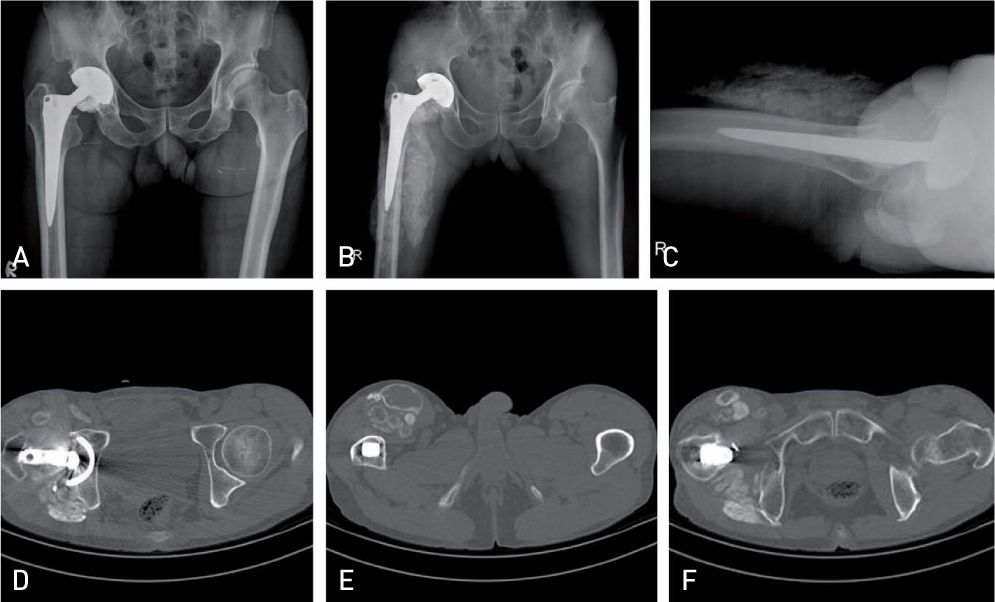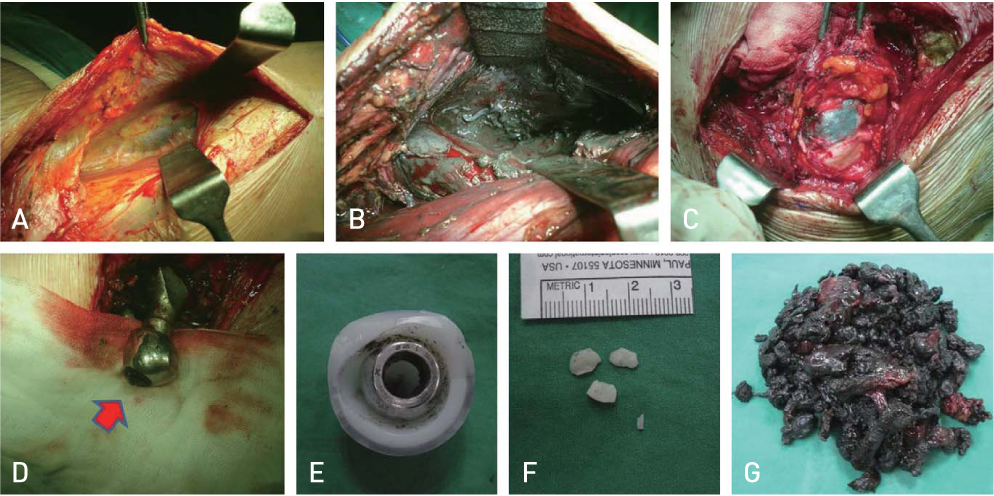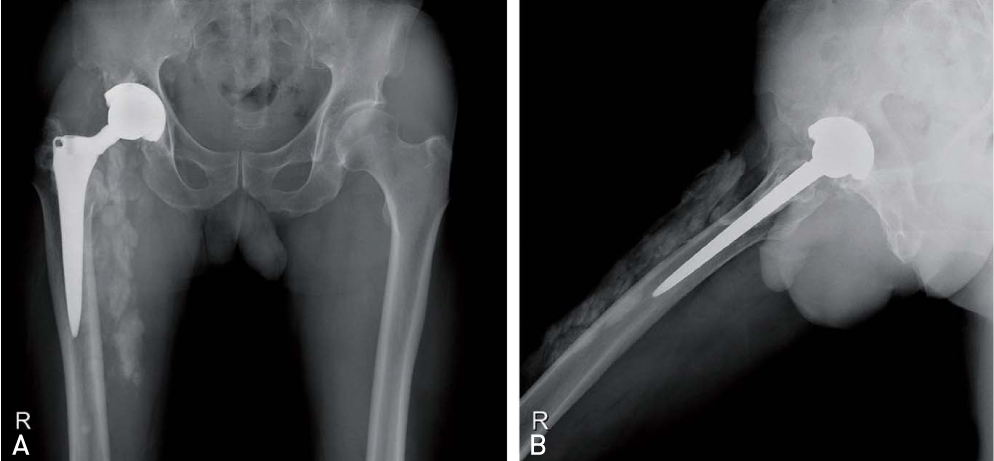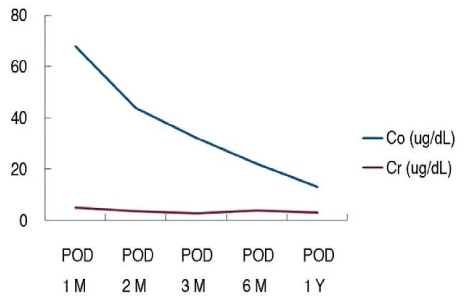Hip Pelvis.
2013 Dec;25(4):292-296. 10.5371/hp.2013.25.4.292.
Failure of a Metal Femoral Head after Revision Total Hip Arthroplasty for a Ceramic Liner Fracture
- Affiliations
-
- 1Department of Orthopaedic Surgery, Chonnam National University Hwasun Hospital, Chonnam National University Medical School, Jeonnam, Korea. tryoon@chonnam.ac.kr
- KMID: 1808138
- DOI: http://doi.org/10.5371/hp.2013.25.4.292
Abstract
- Popularity of ceramic materials has increased among joint reconstruction surgeons for treatment of young patients who wish to maintain their active lifestyle. However, ceramic fracture is one of the most serious complications, and there are many concerns regarding the acceleration of third body wear and refracture of ceramic articulation after revision total hip arthroplasty for a ceramic fracture. To date, a few authors have reported on complications due to residual ceramic particles after revision surgery. We report on a case of metallosis due to metal head wear caused by residue of fractured ceramic particles lodged in the polyethylene liner after revision total hip arthroplasty for a ceramic liner fracture.
Keyword
MeSH Terms
Figure
Reference
-
1. Boutin P, Christel P, Dorlot JM, et al. The use of dense alumina-alumina ceramic combination in total hip replacement. J Biomed Mater Res. 1988; 22:1203–1232.
Article2. Fritsch EW, Gleitz M. Ceramic femoral head fractures in total hip arthroplasty. Clin Orthop Relat Res. 1996; (328):129–136.
Article3. Allain J, Goutallier D, Voisin MC, Lemouel S. Failure of a stainless-steel femoral head of a revision total hip arthroplasty performed after a fracture of a ceramic femoral head. A case report. J Bone Joint Surg Am. 1998; 80:1355–1360.
Article4. Park MS, Yoon SJ, Yoo MJ. Repeated ceramic head fracture after ceramic-on-ceramic total hip arthroplasty. J Korean Hip Soc. 2012; 24:59–64.
Article5. Hwang KS, Lee PE. Dissociation of sandwich ceramic liner: A case report. J Korean Orthop Assoc. 2004; 39:94–97.
Article6. Davidson JA, Poggie RA, Mishra AK. Abrasive wear of ceramic, metal, and UHMWPE bearing surfaces from third-body bone, PMMA bone cement, and titanium debris. Biomed Mater Eng. 1994; 4:213–229.
Article7. Tipper JL, Hatton A, Nevelos JE, et al. Alumina-alumina artiflcial hip joints. Part II: characterisation of the wear debris from in vitro hip joint simulations. Biomaterials. 2002; 23:3441–3448.
Article8. Kempf I, Semlitsch M. Massive wear of a steel ball head by ceramic fragments in the polyethylene acetabular cup after revision of a total hip prosthesis with fractured ceramic ball. Arch Orthop Trauma Surg. 1990; 109:284–287.
Article9. Matziolis G, Perka C, Disch A. Massive metallosis after revision of a fractured ceramic head onto a metal head. Arch Orthop Trauma Surg. 2003; 123:48–50.
Article
- Full Text Links
- Actions
-
Cited
- CITED
-
- Close
- Share
- Similar articles
-
- Repeated Ceramic Head Fracture after Ceramic-on-ceramic Total Hip Arthroplasty
- Ceramic Head Fracture in Ceramic-on-Polyethylene Total Hip Arthroplasty
- A Case of Failure of a Ceramic Head in Total Hip Arthroplasty: A Case Report
- Early Comminuted Fracture of an Alumina Liner in a Ceramic on Ceramic Total Hip Arthroplasty
- Dissociation of Sandwich Ceramic Liner: A Case Report





